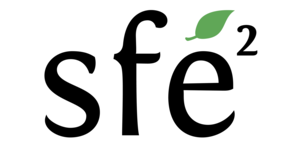The intertidal area is the coastal strip between high and low tides where sea dances with land. While conditions in the intertidal area can be ecologically extreme, it is home to many living organisms and is an important feeding spot for resident and migrating birds. As hosting diverse human activities from aquaculture (e.g. mussel, oyster), shellfish harvesting, to recreation (tourism), intertidal shores are closely related to human well-being. These ecosystems also reduce risks against coastal erosion and submersion by buffering the impacts of storm surge and sea level rise on human coastal communities. Hence, intertidal areas are critically important socially, economically and ecologically.
However, intertidal areas concentrate a broad cocktail of human stressors, from global climate change to local urban developments, or agricultural runoffs that significantly impact coastal biodiversity and ecosystem functioning. For instance, temperature warming has triggered shifts in species distributions, both poleward and higher up on the intertidal zone while sea-level rise and coastal artificialization (e.g. impoldering) have reduced the amount and the quality of habitat space available for intertidal species. Moreover, disturbances such as storms or human activities (e.g. overexploitation, pollution) can reset parts of the intertidal area, initiating novel ecological succession where pioneering species are gradually replaced by more stable communities over time.
Through this project, we propose to exploit latest advances in remote sensing (e.g. BioIntertidal software) to analyse spatiotemporal trends in intertidal areas of the world. Remote sensing techniques are crucial for understanding intertidal zone dynamics, especially given the challenges of accessing those areas directly. Specifically, we propose to use spatial time series of optical satellite imagery (e.g. PlanetScope, Sentinel-2, Landsat) to track changes in the distribution of mudflats, mussel beds, oyster and honeycomb reefs, sandbars, and vegetated areas such as seagrass meadows, salt marshes and mangroves, which are crucial habitats for many species such as birds, fish, and invertebrates. A first component of the work aims to quantify the amount and the rate of surface loss due to urban and harbour developments. Then, a particular attention will be given to green tides and changes in intertidal browning. While green tides occur in eutrophic (i.e. high-nutrient due to intense farming or human terrestrial runoffs) zones, which allows for a massive overgrowth of opportunistic green algae; browning refers to the phenomenon where vegetated intertidal zones, such as salt marshes and tidal flats, experience a decline in vegetation health. Both phenomena can have important ecological implications with, for instance, studies showing that browning reduces the habitat available for numerous species that rely on healthy intertidal vegetation. Furthermore, vegetation in intertidal zones plays a significant role in carbon sequestration (blue carbon) suggesting that browning leads to a reduction in carbon storage capacity while the opposite occur for green tides. Hence, understanding trends in intertidal browning and greening is important for managing these ecosystems, especially in the global change context.
Remote sensing studies have proved useful to identify trends in intertidal browning/greening using spectral indices like the Soil Adjusted Vegetation Index (SAVI) or the Normalized Difference Water Index (NDWI). Multiple factors can lead to browning/greening including climate change, sea-level rise, coastal development, pollution, dredging or sediment extraction. For instance, nutrient pollution (eutrophication) from agriculture or urban river run-off can degrade water quality, leading to hypoxia (oxygen depletion) and stress on intertidal vegetation, ultimately leading to browning. Yet, nutrient pollution can also increase the prevalence of green tides. To date, the relative importance of multiple factors, at both local and global scales, in enhancing intertidal browning/greening is unknown. Thus, the project will combine satellite-based estimates of spatio-temporal trends in multiple indices (e.g. SAVI, NDWI, original index quantifying browning), and advanced statistical and machine learning (e.g. random forest, convolutional neural network) modelling to characterise the relative influence of environmental conditions and anthropogenic stressors to variability in browning and greening. By using a global approach together with time series data on climate and land-use changes and spatial data on human stressors, this project aims to (1) identify the areas showing the strongest trends in terms of loss of intertidal shores due to man-made developments, green tides, and browning and (2) elucidate the factors (e.g. climate change, pollution) contributing the most to these trends, while accounting for potential interactions between these factors.
The ideal candidate for this PhD should have a strong background in environmental science, ecology, or a related field, with expertise in remote sensing and spatial analysis. Proficiency in data analysis, including machine learning and statistical modeling, is essential. The candidate should also have experience in coastal or marine ecosystems, and an interest in global environmental challenges. Strong problem-solving skills and the ability to work with large datasets and satellite imagery would be key.

Commentaires récents